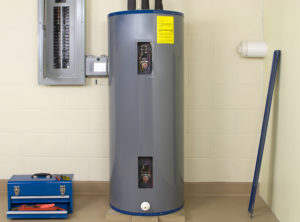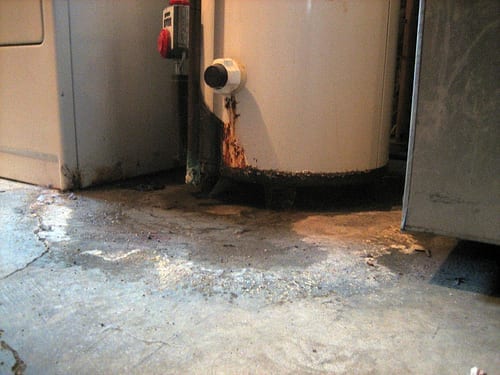Key Protocols for Homeowners Dealing with Broken Hot Water Systems
CallEveryone seems to have their private theory about Water Heater Repair.

Whether it is located in the cellar or a different area, damaged water heating systems can trigger anxiety. Having no warm water supply is likewise troublesome.
Shut Down Power Source
Before calling the plumber, shut off a gas water heater by transforming the temperature level dial. This is usually situated at the top of the thermostat. If you have a design that operates on electric power, turn off the circuit breaker. This will certainly prevent electrocution, specifically if there is a leak as water is a conductor. Usually, the heating element shuts off when the water strikes a particular temperature level. With a busted container, it may malfunction. Cutting it off ensures you remain risk-free.
Cut Off the Cold Water Supply
Cut off the tanks tap water supply from the source. When your storage tank is in great problem, the cool water stops loading up when the tank is full. If you can not find it or reach it, you should turn off that major water supply line outside your residential property.
Call the Plumber
After doing the initial two security actions, you should call your plumber to find right away to repair a ruptured water heater. However, keep in mind that your system will certainly not just conk out drastically overnight. There are normally indications that your aging hot water heater has debris accumulation in the interior. Keep in mind of the following:
Rather, as soon as you identify these indicators, have a specialist come to inspect your water heating unit give thanks to. Generally, water heating units have a life-span of about 8 to 12 years.
Clean Up Building
After calling the plumber, file damage by making note and pictures so you can claim your property owner's insurance coverage. From there, begin the instant cleaning. Get any kind of crucial valuables to prevent more saturating. Eliminate any type of standing water to protect against mold and also mildew development. Make use of that to drain pipes the water if you have a completely submersible water pump. Otherwise, the traditional pail approach will likewise function. Attempt to mop out every little thing, including baseboards as well as walls. Maintain them running to keep air distributing if you have an electrical follower and also dehumidifier. This will help prevent mold and mildew development.
Keep in mind, if you see any problems with your water heating system, call the pros right away. You can not take this trouble lightly because a malfunctioning thermostat can elevate water temperature to a dangerously high level, leading to unintentional burns.
Whether it is located in the basement or a separate area, busted water heating systems can create stress and anxiety. Prior to calling the plumber, closed off a gas water heating unit by turning the temperature dial. After doing the first two safety and security actions, you have to call your plumber to come right away to take care of a burst water heater. If you have a submersible water pump, make use of that to drain pipes the water. Keep in mind, if you notice any kind of problems with your water heater, call the pros right away.
8 REASONS YOUR HOT WATER HEATER IS NOT WORKING & HOW TO FIX
Water Heater Problems & Solutions
Loose or Damaged In-Line Valve
Unlike a water leak near the bottom of your water tank, a water leak on top of your system can be easily fixed. A common cause of water tank leaks includes a loose in-line valve. This is a handle that is located at the top of the water tank that is engineered to activate or deactivate the flow of water. To fix this problem, you will need to secure the nut that holds the ball or in-line valve in its location. If the leak becomes more severe once it is tightened, you will be required to travel to your local hardware store to purchase a new in-line valve for your water heater.
Damaged Pressure Relief Valve
Most types of water heaters are equipped with a pressure relief valve that is engineered to discharge pressure from the water tank when it becomes too high. If this valve on top of your water heater begins to leak, we recommend purchasing a new one online or from your local store. The process of removing and replacing pressure relief valves is not complicated.
No Warm Water
If you have an electric water heater in your home, the most typical cause of a lack of warm water is a broken heating element. Your water heater is equipped with two heating elements that are tasked with heating incoming water in the water tank. Once a heating element begins to malfunction, you will have little to no hot water to use for showering, cleaning, and laundry.
Low Supply of Hot Water
Are you continuously running out of warm water? This issue may be a byproduct of a cracked dip tube. This tube is engineered to push cold water to the base of your water tank to be heated. Once a crack or hole begins to form in the dip tube, the incoming supply of cold water may be released near the top or middle of your tank. As a result, the cold water on top of the tank will be sent to the faucets and showers in your house. This hot water heater problem can only be fixed by replacing the dip tube on your system. Since the process of installing a new dip tube is complex, we recommend calling a certified technician for help.
A low supply of warm water may also be a signal of excess sediment buildup in your water tank. As your water heater reaches the middle of its life cycle, minerals in water including magnesium and calcium will begin to collect at the base of the water tank. As the minerals continue to grow, there will be less room in the water tank to store hot water. To resolve this problem, flush your water heater to remove the excess minerals.
Water is Too Warm or Cold
If the water in your shower feels uncomfortable hot or cold, you can adjust the temperature of your water by changing the settings on your thermostat. Setting the temperature to 120 degrees Fahrenheit may help you save money on your utility bills. This is an excellent temperature to use if you’re worried about scalding or skin irritation. Does this temperature feel too cold? You may also adjust the thermostat to 140 degrees Fahrenheit to make your showers more pleasant. If your hot water heater is not working when you change the temperature, this is an indicator of a broken thermostat. Immediately find a certified plumbing or heating contractor in your area to repair or replace your thermostat.
Low Water Pressure
Low water pressure is not always caused by a malfunctioning water heater. If you live in an older home with smaller water pipes, the flow of water will be restricted prior to reaching our kitchen or bathroom skins. The only way to eliminate this hot water heater problem is to connect new ¾-inch water lines to your system. Another type of problem that may negatively impact your water pressure includes calcium deposits in water pipes.
As magnesium and calcium begin to form in your pipes, the diameter of your water lines will become smaller. As a result, the warm water from your water heater will not be able to travel in an efficient manner to your sinks or appliances. Since the process of replacing water pipes includes removing drywall, an average homeowner that does not have a plumbing license will not be able to fix this hot water heater problem.
https://www.wmhendersoninc.com/blog/8-reasons-your-water-heater-is-not-working-how-to-fix/

Do you appreciate reading up on How to Avoid a Broken Hot Water Heater? Try leaving a remark further down. We'd be pleased to know your feelings about this article. We hope that you come back again later on. In case you enjoyed reading our blog entry plz do not forget to pass it around. We treasure reading our article about How to Avoid a Broken Hot Water Heater.
Guaranteed fix? Call.